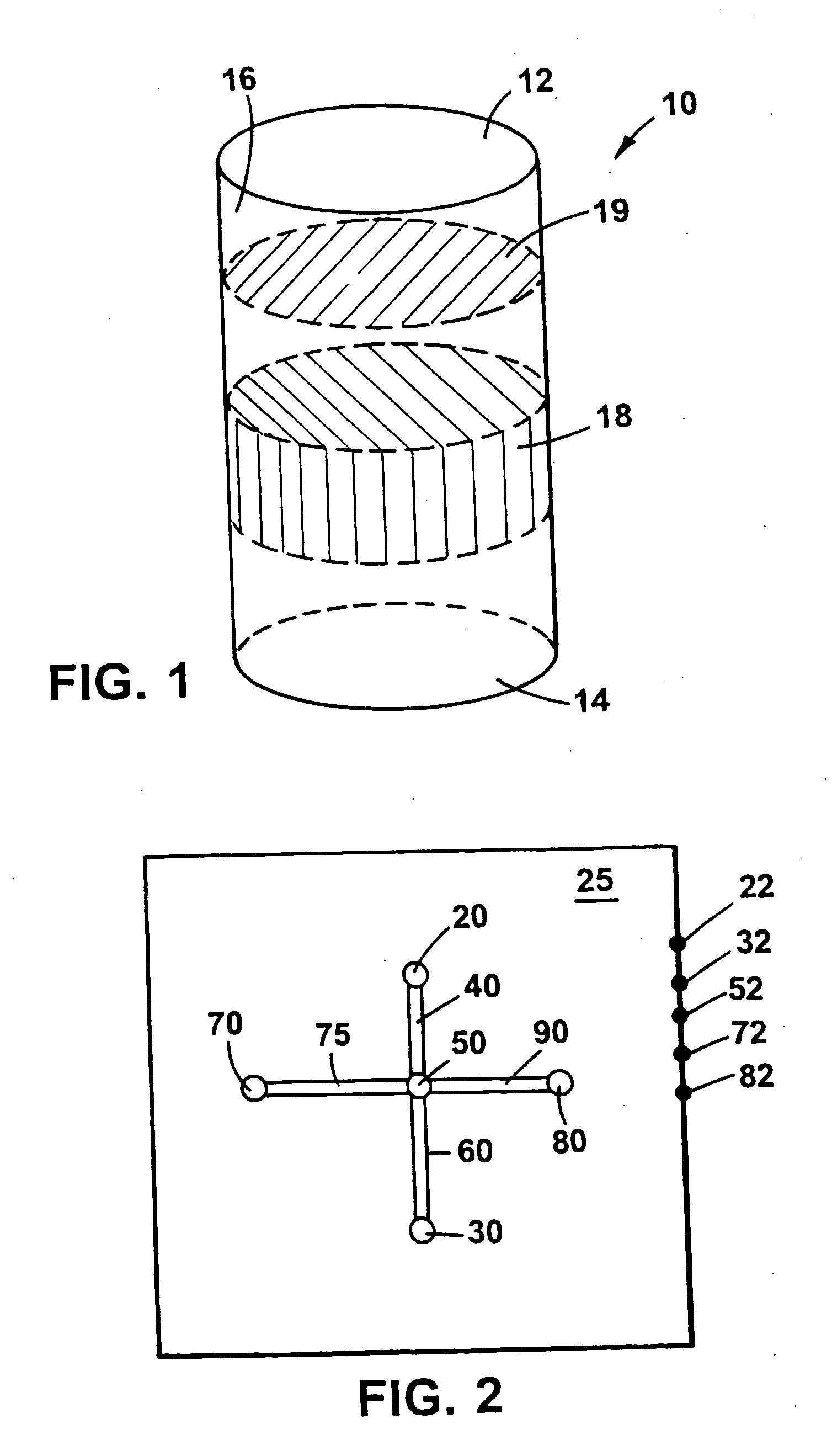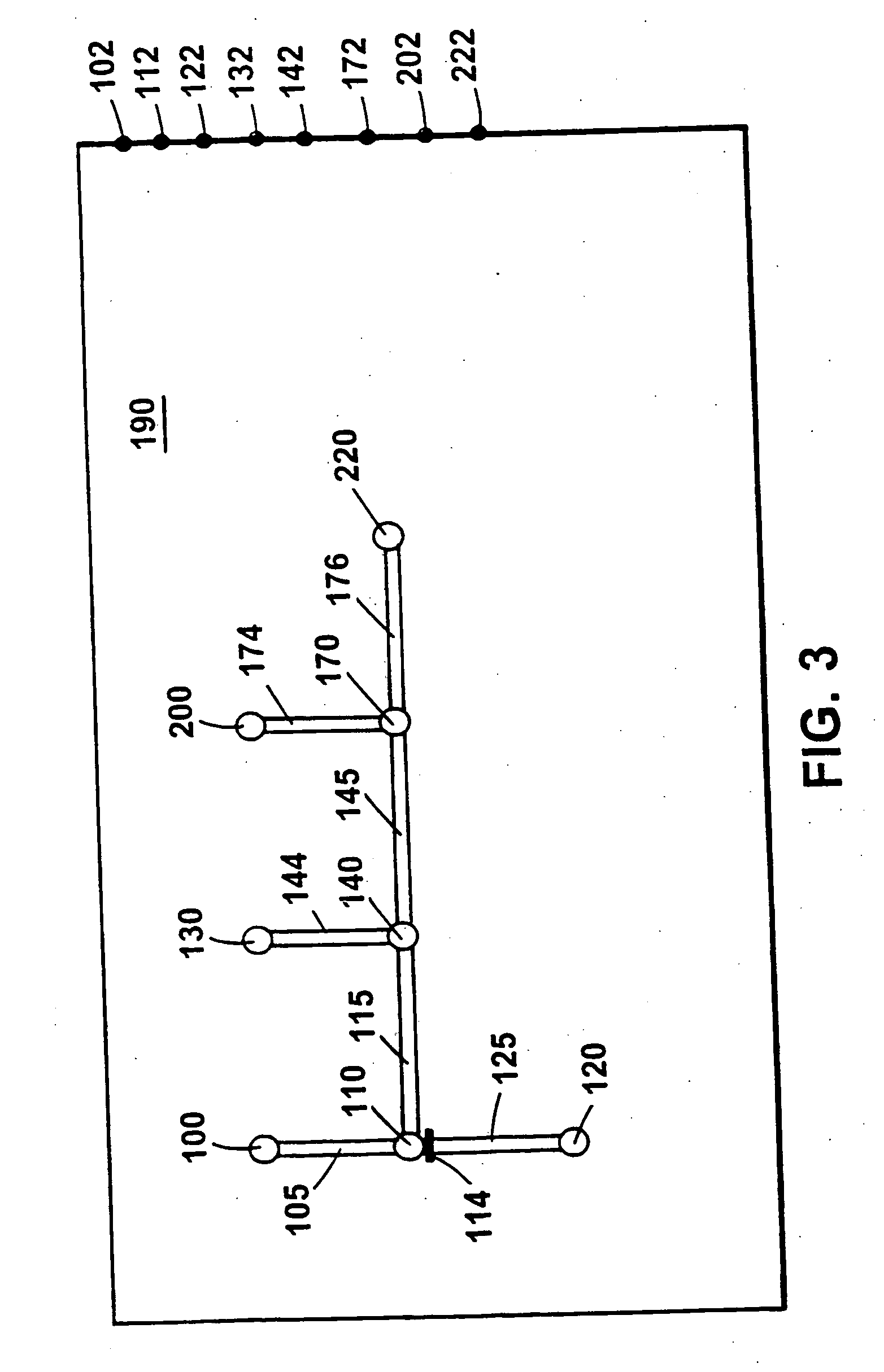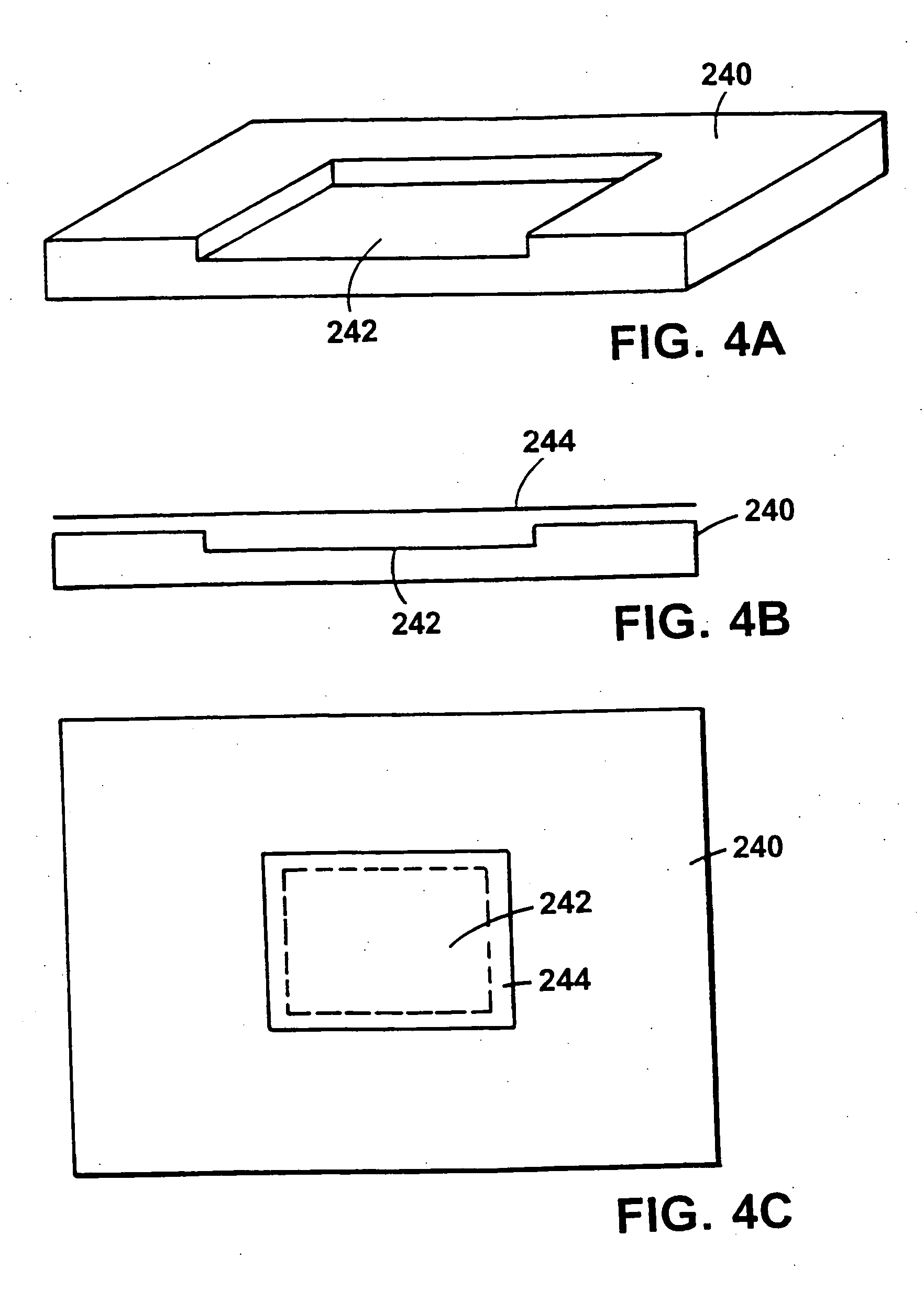Pressure-enhanced extraction and purification
- Summary
- Abstract
- Description
- Claims
- Application Information
AI Technical Summary
Benefits of technology
Problems solved by technology
Method used
Image
Examples
example 1
DNA Isolation and Purification in an Anion-Exchange Cartridge
[0167] DNA samples were separated using a Qiagen DEAE anion-exchange resin (Qiagen, Inc., Santa Clarita, Calif.) at ambient and elevated pressures. The DEAE resin was packed into a 9 mm×4 mm I.D. (5 mm O.D.) stainless steel ‘half-length column’ capped with titanium frits with a 2 μm pore size (Valco Instrument Company, Inc., Houston, Tex.). Two half-length columns, one containing resin and the other acting as a spacer and devoid of resin, were placed into a column holder. The column holder was a metal tube with an inner diameter of 5 mm and syringe fittings at the ends to allow fluid to flow through the columns.
[0168] Pressure elution of DNA was performed using a pressure flow apparatus as described in PCT Appln. No. US / 96 / 03232, controlled by a microcomputer with LABVIEW™ software (National Instruments, Austin, Tex.). The columns were inserted into a pressure chamber adapted to receive the columns. Liquid was injected a...
example 2
Restriction Digestion of Eluate Without Desalting
[0179] pCMV-SV40T plasmid was isolated from 1.5 ml of an overnight culture of an JM109 E. coli strain by alkaline lysis (Sambrook et al., Molecular Cloning: A Laboratory Manual, 2nd ed., Cold Spring Harbor Laboratory Press: Plainview, N.Y., 1989, pp. 1.25 -1.26). 1.5 ml of an overnight bacterial culture was placed in a microcentrifuge tube and spun for 30 seconds at 12,000 g. The medium was removed and the cells were resuspended with vigorous vortexing in 100 μl of a solution containing 50 mM glucose, 25 mM Tris-HCl (pH 8.0), and 10 mM EDTA (pH 8.0). 200 μl of a freshly made solution of 0.2 N NaOH (containing 1% sodium dodecyl sulfate, SDS) was added, and the tube was inverted five times. 150 μl of ice cold solution III (prepared by mixing 60 ml of 5 M potassium acetate, 11.5 ml of glacial acetic acid, and 28.5 ml of water) was added, then the sample was gently vortexed and incubated on ice for 4 minutes. The sample was centrifuged a...
example 3
Protein Expression in Mammalian Cells Utilizing Plasmid DNA Isolated and Purified by Hyperbaric Pressure
[0182] The vector pCMV-SV40TAg, which encodes the large tumor antigen (TAg) of the SV40 virus, was transformed into a bacterial strain, JM109, and isolated by standard alkaline lysis procedure (Sambrook et al. Molecular Cloning: A Laboratory Manual, Cold Spring Harbor Laboratory Press; Plainview, N.Y., 1989) essentially as described in Example 2. 1.0 ml of the sample was purified using the Qiagen #12129 plasmid kit (Santa Clarita, Calif.). Another 1.0 ml of the sample was aliquoted into three equal portions and processed batchwise as described in Example 1. The plasmid was eluted with 500 mM NaCl at 29,000 psi. The solution containing the purified pCMV-SV40TAg plasmid was ethanol precipitated and resuspended in sterile water.
[0183] A transient protein expression assay was performed to compare the purity and quality of the plasmid prepared using hyperbaric pressure with that of t...
PUM
| Property | Measurement | Unit |
|---|---|---|
| Temperature | aaaaa | aaaaa |
| Temperature | aaaaa | aaaaa |
| Temperature | aaaaa | aaaaa |
Abstract
Description
Claims
Application Information
 Login to View More
Login to View More - R&D
- Intellectual Property
- Life Sciences
- Materials
- Tech Scout
- Unparalleled Data Quality
- Higher Quality Content
- 60% Fewer Hallucinations
Browse by: Latest US Patents, China's latest patents, Technical Efficacy Thesaurus, Application Domain, Technology Topic, Popular Technical Reports.
© 2025 PatSnap. All rights reserved.Legal|Privacy policy|Modern Slavery Act Transparency Statement|Sitemap|About US| Contact US: help@patsnap.com



